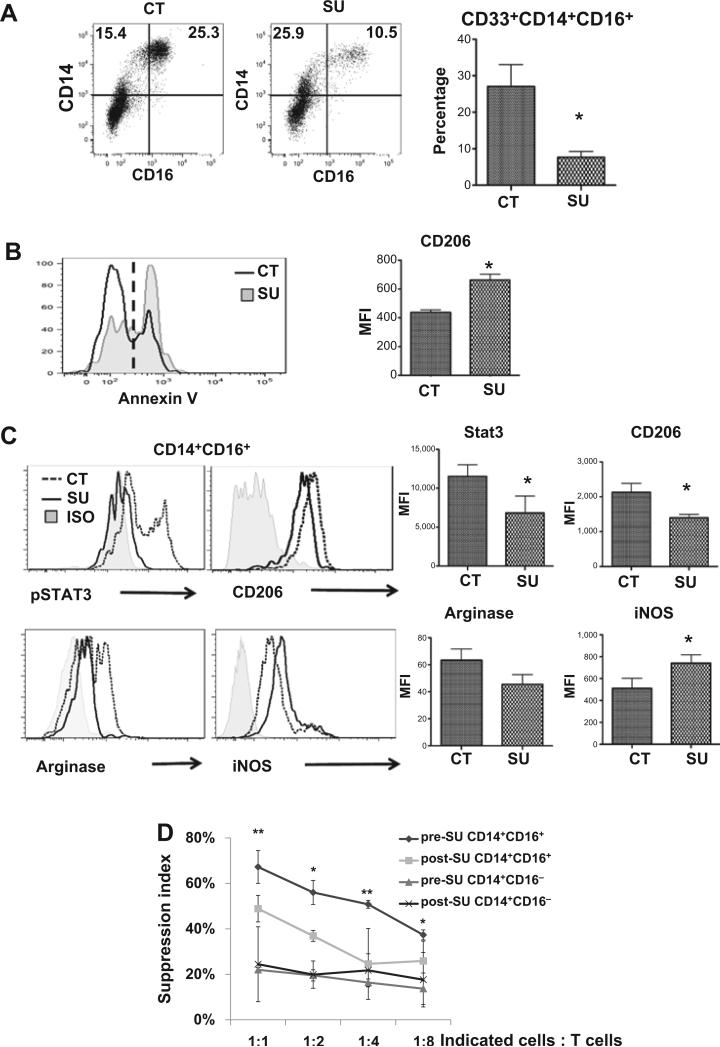Figure 2.
Sunitinib attenuates the M2-like phenotype in mouse MDSC and suppressive function in CD33+CD14+CD16+ nonclassical monocytes. Human PBMC or sorted human CD33+CD14+CD16+ nonclassical monocytes were left untreated (CT) or treated with sunitinib (SU, 250 nmol/L) for 48 hours followed by staining with indicated antibodies and isotype controls. A, total PBMCs were gated on CD33+ cells, and the dot plots of cell populations (left) and the statistical analyses of the percentages of CD33+CD14+CD16+ population (right) were presented. B, flow-cytometric histogram of Annexin V in total PBMC untreated (CT, black) or treated with sunitinib (SU, gray; left). Mean fluorescent intensity of CD206+ in Annexin V+CD33+CD14+CD16+ cells was shown in the right panel. C, flow-cytometric histograms (left) and mean fluorescent intensity (right) of pSTAT3+, CD206+, arginase+ (M2-like), and iNOS+ (M1-like) in sorted human CD33+CD14+CD16+ nonclassical monocytes. (*, P < 0.05, when compared with control group). D, human CD33+CD14+CD16− classical and CD33+CD14+CD16+ nonclassical monocytic populations were sorted from PBMC of patients before and after sunitinib treatment. Suppressive activity of CD33+CD14+CD16− and CD33+CD14+CD16+ populations in PBMC was assessed as described in Materials and Methods. (*, P < 0.05; **, P < 0.01, when compared with CD33+CD14+CD16− group before sunitinib treatment at indicated ratio.)

